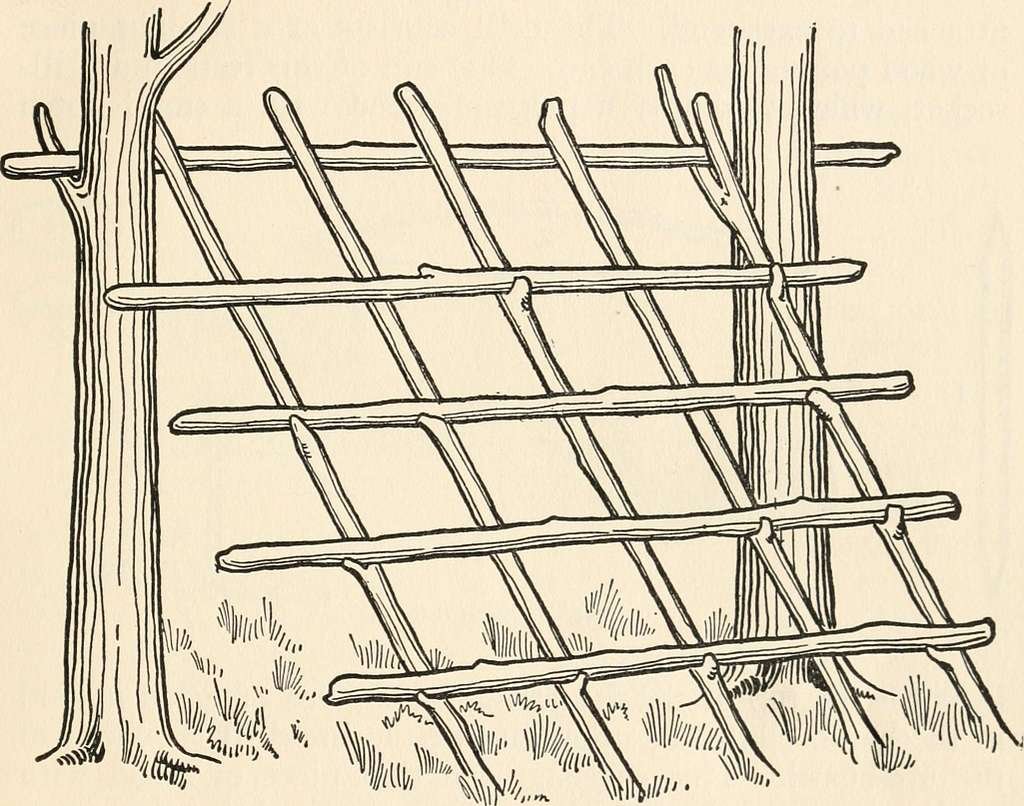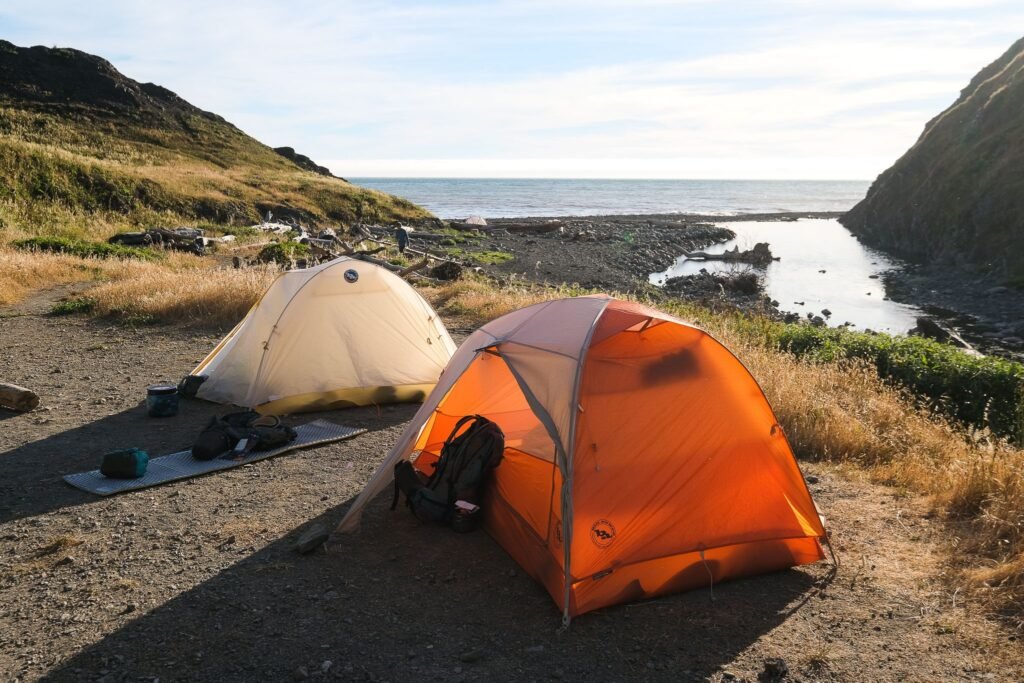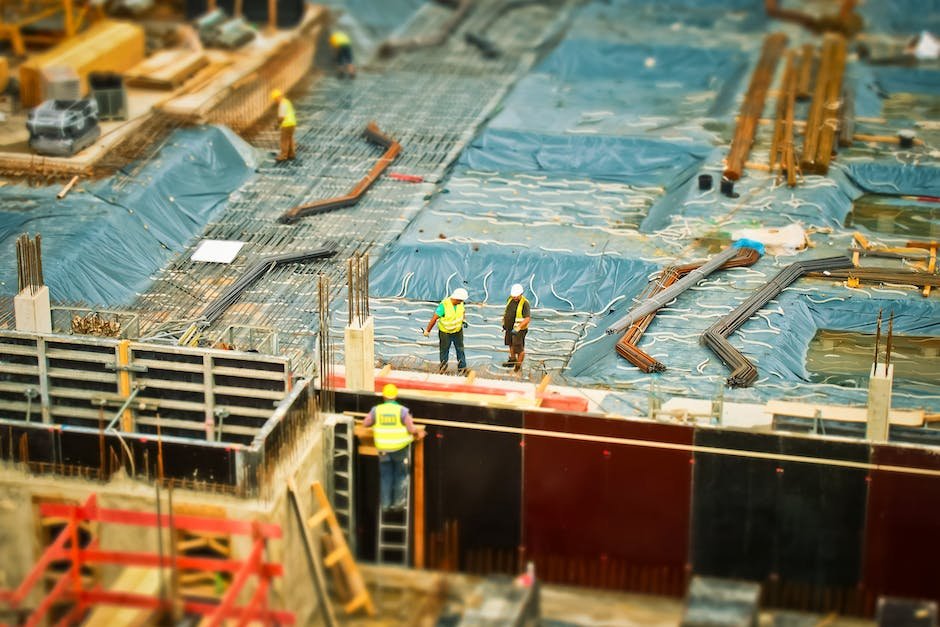Now Reading: How to Build a Wilderness Root Cellar for Food Storage
-
01
How to Build a Wilderness Root Cellar for Food Storage

How to Build a Wilderness Root Cellar for Food Storage
Nestled amidst the untamed embrace of nature’s verdant tapestry, lies a secret sanctuary of sustenance, concealed beneath the very soil it seeks to preserve. Welcome to the captivating realm of wilderness root cellars: an artisanal haven where food storage transcends the ordinary. Picture this: you have ventured into the wild, craving a vibrant connection with the Earth’s enchanting bounty, and now, you yearn to safeguard the fruits of your exploration against the relentless passage of time. Fear not, for in this article, we embark on a journey through the intricate art of constructing a wilderness root cellar—a haven that celebrates self-reliance, Mother Nature’s benevolence, and the simple pleasure of relishing flavors nurtured by your own hands. So, let us delve further into the enigmatic realm of subterranean enchantment, and learn how to unlock the secrets of building a wilderness root cellar to immortalize your nourishing explorations.
Table of Contents
- Creating a Successful Foundation for Your Wilderness Root Cellar
- Choosing the Ideal Location for Optimal Food Preservation
- Essential Materials and Construction Techniques for Your Root Cellar
- Maintaining the Ideal Climate: Ventilation and Temperature Control
- Practical Tips for Organizing and Storing Food in Your Wilderness Root Cellar
- Q&A
- The Way Forward
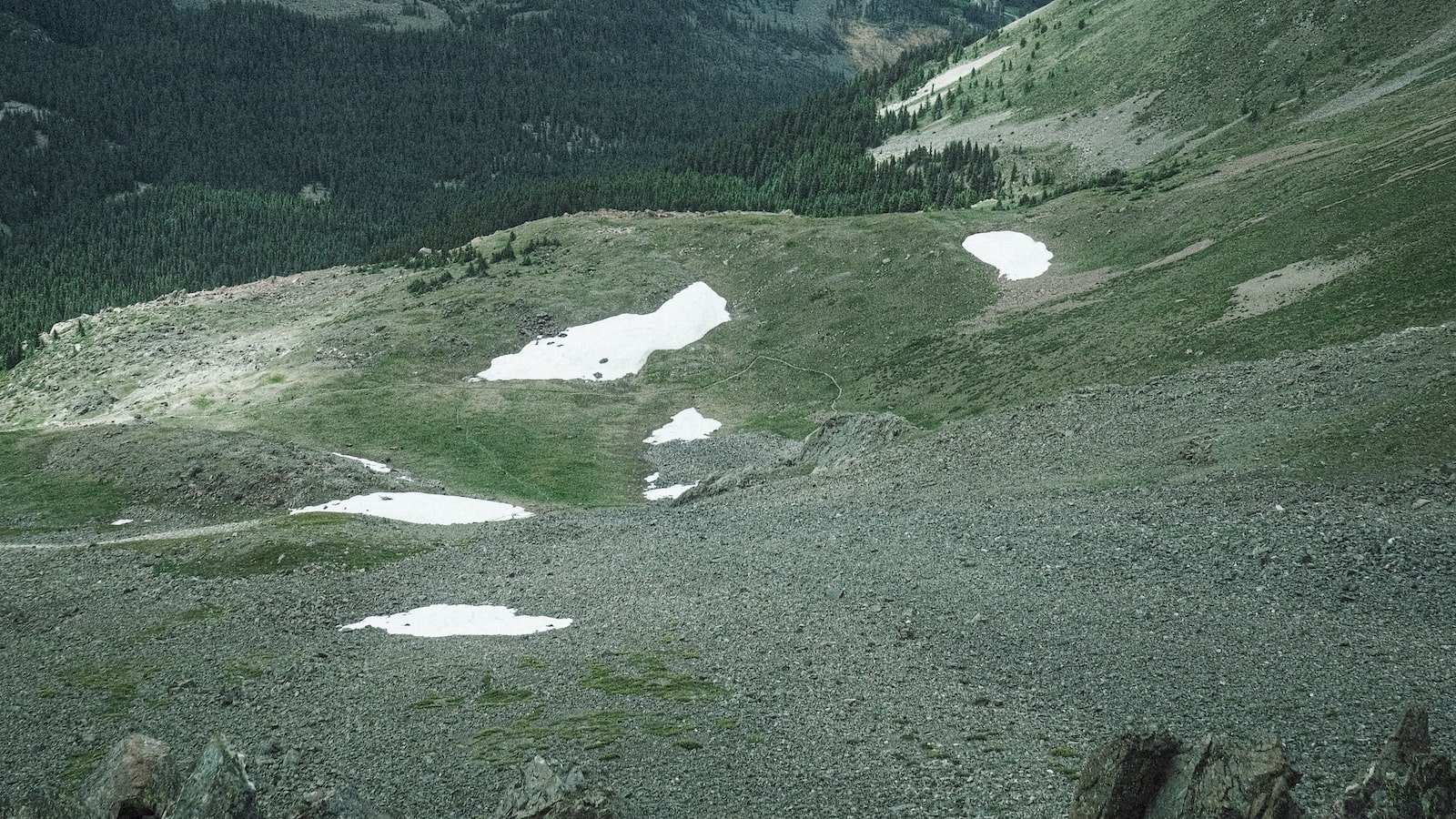
Creating a Successful Foundation for Your Wilderness Root Cellar
Creating a Solid Foundation for Your Wilderness Root Cellar
Building a wilderness root cellar is an exciting endeavor that opens up new possibilities for preserving food in nature’s embrace. However, before you delve into construction plans and material choices, it’s crucial to establish a strong foundation that will ensure the cellar’s durability and functionality. Here are some key steps to creating a successful base for your wilderness root cellar:
- Choose the Right Location: Selecting an ideal site for your root cellar is essential. Look for a spot that is well-drained, away from flooding areas, and sheltered from excessive sunlight. Ideally, the cellar should be built into a hillside or embankment to take advantage of natural insulation and maintained temperatures.
- Prepare the Ground: Clear the area of any obstructions like rocks, roots, and debris. Level the ground and dig a trench for the foundation. Make sure to remove any organic materials that could potentially decompose and affect the stability of the cellar over time.
- Build a Solid Foundation: Constructing a sturdy foundation is crucial for a successful root cellar. Start by pouring a concrete footing that surrounds the perimeter of the cellar. This will provide stability and support the weight of the structure. Then, build the cellar walls using reliable materials such as stone, concrete blocks, or treated wood. Ensure the walls are properly reinforced and sealed to prevent moisture penetration.
Achieving a successful foundation for your wilderness root cellar is the essential first step toward creating a reliable and efficient space for food storage. By meticulously planning the location, preparing the ground, and constructing a solid foundation, you can embark on your root cellar journey with confidence, knowing that your preservation efforts will be well-supported.

Choosing the Ideal Location for Optimal Food Preservation
Preserving food is not just about using the right techniques or equipment; equally important is selecting the perfect location to ensure optimal preservation. Here are some key factors to consider when choosing the ideal location:
- Temperature: Find a cool location that maintains a consistent temperature between 32°F to 40°F (0°C to 4°C). Extreme temperatures can affect food quality and shorten its shelf life. Avoid placing food near heat sources, such as ovens or radiators, as the additional warmth can cause spoilage.
- Humidity: The ideal humidity for food preservation ranges between 50% to 70%. Too much humidity can lead to mold and bacterial growth, while low humidity can cause dehydration and spoilage. Consider using a hygrometer to accurately monitor humidity levels in the chosen location.
- Light: Keep preserved foods away from direct sunlight or bright artificial light. Exposure to light can degrade vitamins, break down pigments, and cause texture changes in certain food items. Choose a dark location or store food in opaque containers to protect them from light damage.
- Airflow: Good ventilation is crucial for preventing the buildup of moisture and odors, which can hasten food decay. Ensure there is adequate airflow in the selected location, or consider utilizing fans or open shelves to maintain a constant supply of fresh air.
- Proximity to contaminants: Avoid storing preserved food near chemicals, cleaning agents, or other potential contaminants. These substances can negatively interact with food or compromise its safety. Select a location that is free from such hazards and keep preserved foods in sealed containers to minimize the risk of contamination.
By carefully considering these factors, you can choose the ideal location for food preservation, ensuring freshness, longevity, and the best possible quality for your preserved goodies.
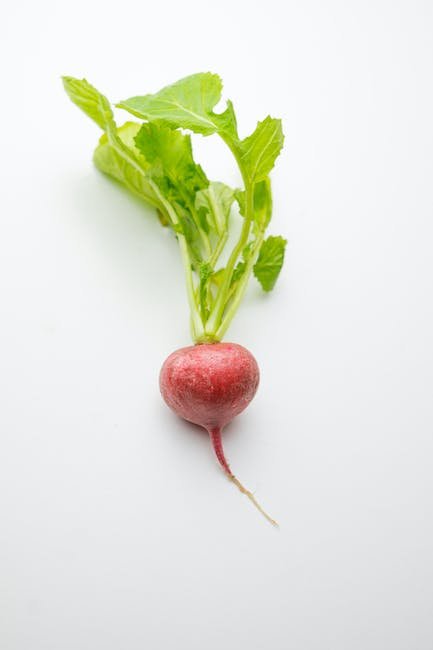
Essential Materials and Construction Techniques for Your Root Cellar
When it comes to constructing your very own root cellar, there are a few essential materials and construction techniques that you should keep in mind to ensure a successful and efficient storage space for your fruits, vegetables, and preserves. Let’s dive in!
Materials:
- Concrete or Stone Walls: Opt for sturdy materials like concrete or stone to create a solid structure that will provide excellent insulation and maintain a consistent temperature.
- Ventilation System: Install a reliable ventilation system to regulate airflow and prevent the buildup of excess moisture or stale air, ensuring a fresh environment for your produce.
- Insulation: Properly insulate your root cellar to minimize heat transfer and maximize the effectiveness of temperature control. Consider using foam board insulation or straw bales.
- Moisture-Resistant Flooring: Choose a flooring material that is moisture-resistant, such as concrete or tile, to avoid mold and rot in your cellar.
- Strong Shelving: Invest in sturdy shelving units or build custom racks to support the weight of your stored items and maximize storage space.
- Sealing Materials: Use high-quality weatherstripping and caulking to seal any gaps or cracks in the construction, ensuring that your root cellar remains airtight.
Construction Techniques:
- Proper Drainage: Ensure your root cellar is built on elevated ground or include a drainage system to prevent water accumulation.
- Optimal Location: Find a location that offers natural insulation, such as a north-facing slope or a spot under a shade tree, to reduce the need for additional temperature control.
- Effective Door Design: Construct a heavy, insulated door that seals tightly to prevent temperature fluctuations and discourage pests from entering your root cellar.
- Appropriate Lighting: Install low-heat lighting fixtures, like LED bulbs, to provide sufficient visibility without generating excessive heat that could spoil your stored produce.
- Humidity Control: Consider incorporating a humidity control system, such as a dehumidifier or natural ventilation features, to maintain optimal moisture levels for different types of fruits and vegetables.
By selecting the right materials and implementing effective construction techniques, you’ll be on your way to creating a reliable and functional root cellar that will help you preserve the flavors of your harvest all year round!

Maintaining the Ideal Climate: Ventilation and Temperature Control
In order to maintain the ideal climate in any space, proper ventilation and temperature control are essential. Ventilation plays a crucial role in ensuring fresh air circulation while temperature control helps to create a comfortable environment. Here are some key considerations for achieving and maintaining the ideal climate:
- Proper air flow: Good air flow is essential to ensure that stale air is exhausted and replaced with fresh air. Installing vents or windows that can be opened and closed allows for natural air circulation. Alternatively, mechanical ventilation systems can be used to control air flow.
- Humidity control: Maintaining the right humidity level is important for comfort and air quality. High humidity can lead to mold growth and discomfort, while low humidity can cause dryness and respiratory issues. Using humidifiers or dehumidifiers can help regulate the humidity levels in the space.
- Temperature regulation: The temperature of a space greatly affects the comfort level of its occupants. To achieve optimal temperature control, using air conditioning systems, fans, or heaters can be effective. Programmable thermostats can also be used to maintain specific temperature ranges at different times of the day.
By focusing on proper ventilation and temperature control, you can create a comfortable and healthy environment for yourself and others. Regular maintenance of ventilation systems and temperature control devices is crucial to ensure they function optimally and contribute to a pleasant atmosphere.
Practical Tips for Organizing and Storing Food in Your Wilderness Root Cellar
When it comes to ensuring your food stays fresh and organized in your wilderness root cellar, a little planning and strategy can go a long way. Here are some practical tips to help you make the most of your storage space:
- Sort and label: Before storing your food, take the time to sort it into categories such as fruits, vegetables, canned goods, and grains. Label each category with clearly visible signs, so you can easily locate what you need when the time comes.
- Utilize shelving: Installing sturdy and adjustable shelves will maximize the use of your root cellar space. Place heavier items at the bottom, while lighter ones go on top. This way, you can prevent any unwanted accidents and ensure easy access to your supplies.
- Maintain ideal temperature and humidity: For optimal storage, a root cellar should maintain a consistent temperature of around 50 to 60 degrees Fahrenheit and humidity levels between 85% to 95%. Consider using a thermometer and hygrometer to monitor these conditions regularly.
- Pack wisely: Properly package your food items to extend their shelf life. Vacuum-sealed bags or airtight containers can help keep your produce fresh and prevent any moisture or air from spoiling them prematurely.
By following these practical tips, you can keep your wilderness root cellar organized and your food supplies in top condition, ensuring that you have a reliable source of sustenance for your wilderness adventures.
Q&A
1. Where should I begin when building a wilderness root cellar?
To start, choose a location in an area with cool, dry soil to ensure proper temperature and humidity control. Clear away any vegetation or debris and dig a hole in the ground, making sure it is deep enough to accommodate your needs.
2. What materials do I need for constructing a wilderness root cellar?
For a sturdy structure, you will require materials like wood, concrete, or stone for the walls and roof. Additionally, insulation such as straw or hay can be used to maintain a consistent temperature inside.
3. How can I ensure proper ventilation in my wilderness root cellar?
To provide adequate airflow, construct vents near the top and bottom of the cellar walls. This helps regulate temperature fluctuations and prevents excess moisture buildup, extending the shelf life of stored foods.
4. What are some tips for maintaining the ideal temperature without electricity?
Utilize natural insulation materials like earth, straw, or sawdust to keep the interior temperature cool. Additionally, consider utilizing the north side of a hill or burying the cellar partially to capitalize on the earth’s inherent coolness.
5. Can I store all types of food in a wilderness root cellar?
Root cellars are well-suited to store root vegetables like carrots, potatoes, and onions. They can also preserve other produce like apples and squash. However, certain fruits, vegetables, and perishable items that require lower or higher temperatures might not be ideal for this storage method.
6. How can I protect my wilderness root cellar from wildlife?
Preventing wildlife from accessing your storage space is crucial. Build sturdy doors using mesh or wire to keep out small animals, while larger doors can be secured with locks or latches to deter larger visitors.
7. Is it safe to store canned goods in a wilderness root cellar?
Canned goods are generally not advisable to store in a wilderness root cellar due to fluctuating temperatures, particularly if they freeze or experience too much heat. It is best to store canned goods in a cool, dry, and consistently temperature-controlled environment.
8. How can I maintain the humidity levels in my wilderness root cellar?
Humidity control can be achieved by placing a container of water inside the cellar. This water source will evaporate, helping to maintain a balanced humidity level by preventing excessive dryness which can cause fruits and vegetables to wither.
9. What are some key factors to consider when organizing items inside a wilderness root cellar?
Arrange your stored items in an organized manner to maximize space and prevent spoilage. Keep produce off the ground to avoid contact with pests or excess moisture, and group similar items together for easy accessibility and rotation.
10. Are there any additional safety precautions to keep in mind when building a wilderness root cellar?
While building, ensure proper structural integrity to avoid cave-ins or collapses. Additionally, be cautious of your physical limitations when digging or lifting heavy materials. Lastly, always seek appropriate permits or permissions if required for construction in your area.
The Way Forward
In conclusion, embarking on the journey of building a wilderness root cellar opens up a world of possibilities for food storage and self-reliance in the great outdoors. As nature beckons, our ancestors’ wisdom becomes our guiding light, reminding us of the profound importance of sustainable living and preserving our food heritage.
With a foundation rooted in simplicity and resourcefulness, your wilderness root cellar becomes a testament to the resilient bond between humankind and the untamed wilderness. It invites us to reconnect with nature’s abundant offerings, fostering a profound sense of gratitude and wonder for the bountiful harvest it provides.
In this mesmerizing dance of craftsmanship and preservation, you’ll encounter challenges and moments of awe alike. As you delve deeper into the art of building your wilderness root cellar, you’ll witness your newfound skills grow like the sprouting seedlings outside its door. Patience, creativity, and adaptability will be your guiding companions, leading you to craft a sanctuary that sustains both body and spirit.
As you venture into the unknown, remember that your wilderness root cellar is more than just a structure—it is an embodiment of self-sufficiency, a tribute to the ingenuity and determination that spans generations. It celebrates the harmonious dance between man and nature, reminding us of our interconnectedness in this vast tapestry of life.
So, gather your tools, harness nature’s guiding winds, and embrace the wild whispers of the forest. Let the joy of building a wilderness root cellar ignite your soul, reminding you of the wisdom that lies ingrained within ancient traditions. Allow this project to nurture your spirit and invigorate your relationship with the world around you.
May your wilderness root cellar stand as a testament to your dedication, a haven for your provisions, and a testament to the magic that unfolds when we find harmony in the untamed embrace of nature.
As an affiliate, my content may feature links to products I personally use and recommend. By taking action, like subscribing or making a purchase, you’ll be supporting my work and fueling my taco cravings at the same time. Win-win, right?
Want to read more? Check out our Affiliate Disclosure page.

